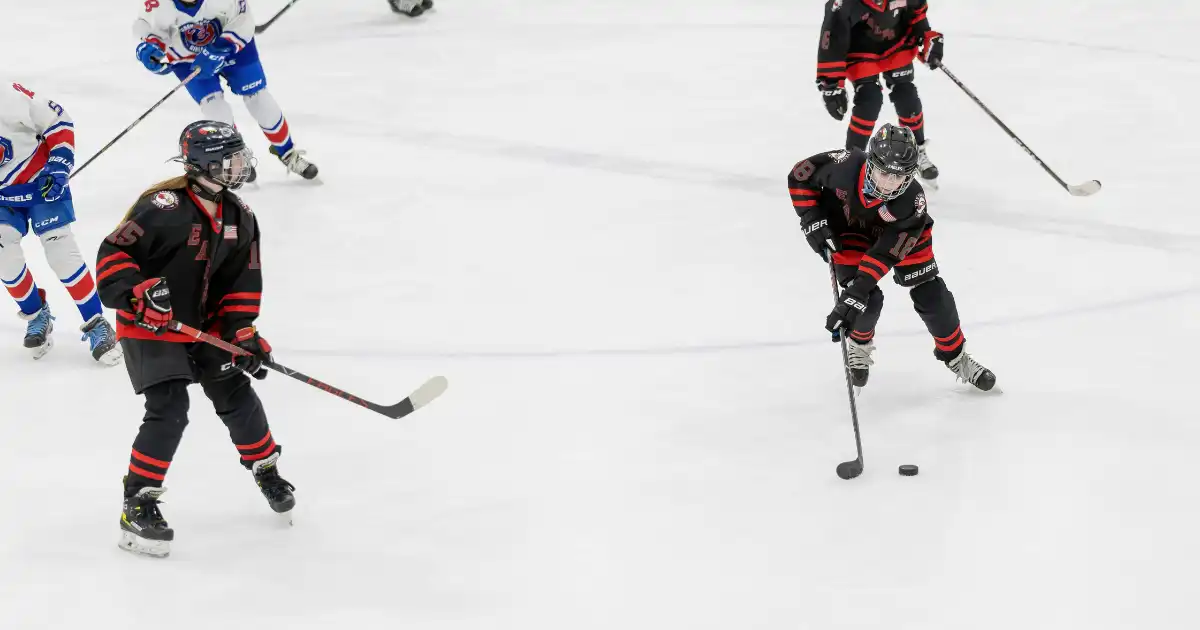In an era dominated by blistering slap shots and precise wrist shots, the humble backhand often goes unnoticed. Yet many legendary goals—from Sidney Crosby’s golden goal to Peter Forsberg’s Olympic shootout—were scored with this versatile shot. Developing a reliable backhand isn’t just for forwards; defensemen and goalies can use it to clear the puck quickly. This backhand shot hockey training guide breaks down the mechanics, drills and strategies you need to turn your backhand into a lethal weapon.
Mechanics of the Backhand Shot
The backhand shot begins with body positioning. Square your shoulders to the target and bend your knees for stability. Keep your bottom hand about half‑way down the shaft and your top hand near the knob. Unlike a forehand, where the blade’s open face naturally cradles the puck, the backhand requires more wrist action. To generate power, shift your weight from your back leg to your front leg as you pull the puck across your body. Snap your wrists and follow through, pointing the blade toward your target. The blade should stay closed to keep the puck flat.
Grip and Footwork
Proper grip is essential for control. Your top hand should anchor the stick and allow a fluid wrist roll, while your bottom hand provides leverage. Experiment with slightly adjusting the bottom hand’s position to see where you generate the most snap. Footwork adds power and accuracy. For stationary shots, plant your feet shoulder‑width apart. For shots in motion, practice transferring weight while skating to maintain balance. Good foot positioning will enable you to release the puck quickly in traffic—a key advantage of the backhand.
Off‑Ice Backhand Shot Hockey Training Drills
You don’t need ice to improve your backhand. Off‑ice backhand shot hockey training can be done in a garage or driveway with simple tools:
- Stickhandling ball drills: Use a weighted ball or stickhandling ball (like the Snabboll) to practice pulling the puck from forehand to backhand. Focus on quick wrist snaps and controlled movements.
- Synthetic shooting pad: Set up a shooting pad and practice transferring weight as you shoot from the backhand. Aim for specific targets to improve accuracy.
- Figure‑8s and cones: Place two cones a few feet apart and weave around them using only your backhand. This builds coordination and simulates in‑game puck protection.
- Resistance band training: Attach a band to your stick and practice the backhand motion against resistance. This strengthens wrist and forearm muscles, improving power.
On‑Ice Drills
To translate backhand shot hockey training to the ice, incorporate these drills into your sessions:
- Corner cycle drill: Skate into the corner, pick up the puck and roll back toward the net using only your backhand. Shoot on goal or pass to a teammate. This drill simulates protecting the puck while preparing to shoot.
- Net‑front quick release: Stand at the side of the net and receive passes from various angles. Quickly pull the puck across your body and fire a backhand shot. This improves reaction time and release speed.
- Breakaway backhand: Start at center ice and skate in alone on the goalie. Vary your release point—close to the net or further out—to keep goaltenders guessing.
- Wraparound drill: Practice coming from behind the net and tucking the puck on the far side using your backhand. This move can surprise defenders and goalies.
Strength and Conditioning
A powerful backhand requires strong wrists, forearms, core and legs. Incorporate these exercises into your backhand shot hockey training program:
- Wrist curls and reverse curls: Use dumbbells or resistance bands to strengthen wrist flexors and extensors.
- Forearm roller: Roll a weighted rope to build grip strength.
- Planks and Russian twists: A strong core stabilizes your body during the shooting motion.
- Lunges and squats: Lower‑body strength provides the base for powerful weight transfer.
Common Mistakes and How to Fix Them
Many players struggle with lifting the puck on the backhand. To fix this, practice rolling your wrists more aggressively and following through higher. Another mistake is over‑swinging; a backhand is more about quick snap than big wind‑up. If your shots lack power, check your weight transfer—you may be shooting off your back foot. Recording yourself (with a smartphone or GoPro) and comparing it to professionals, as recommended in shooting analysis articles, can reveal subtle mechanical errors. Finally, avoid looking down at the puck; keep your head up to read goaltender positioning and pick your spot.
Applying the Backhand in Games
A refined backhand is useful in many scenarios. In close quarters, the backhand allows you to get a shot off quickly without rotating your body. It’s effective on breakaways, wraparounds and net‑front scrambles, where defenders expect a forehand. Defensemen can use quick backhand chips along the boards to clear the zone. Goaltenders benefit too: a strong backhand helps them play the puck behind the net and start breakouts safely. Incorporating backhand shot hockey training into your routine diversifies your offensive repertoire and makes you less predictable.
Turning Practice into Power
The backhand is often overlooked, but with dedicated backhand shot training it can become a potent scoring tool. Mastering the mechanics, grip, footwork and conditioning will give you the confidence to use it in critical moments. Off‑ice and on‑ice drills help build muscle memory, while awareness of common mistakes accelerates improvement. As with any skill, consistency is key. Integrate backhand shot hockey training into your practice schedule, and you’ll find that this subtle shot adds a new dimension to your game.

